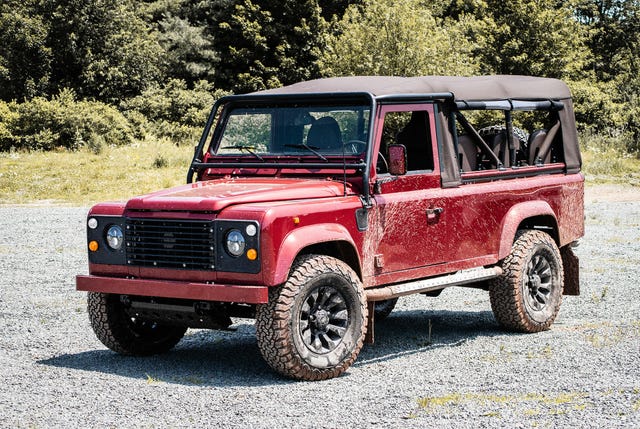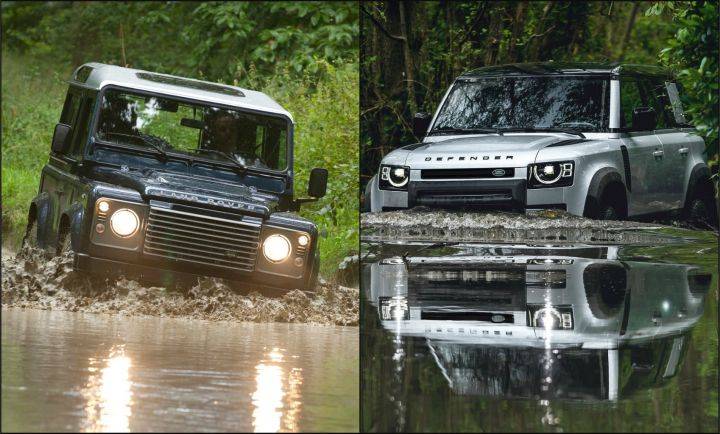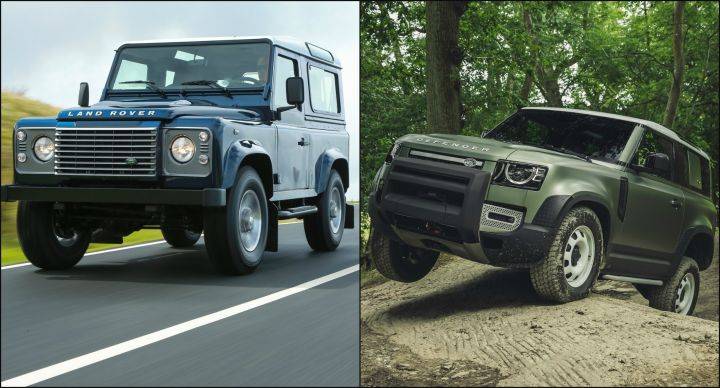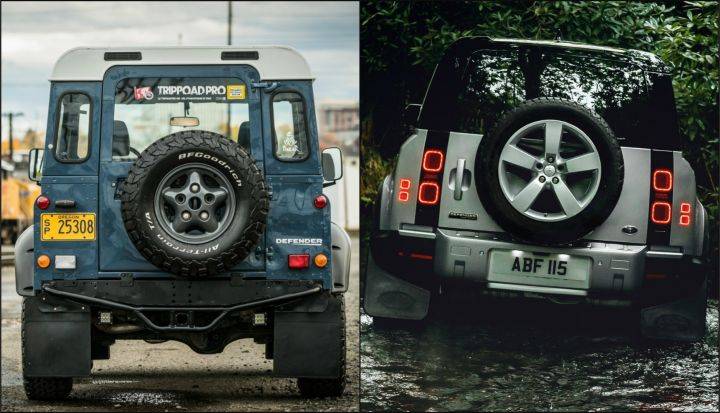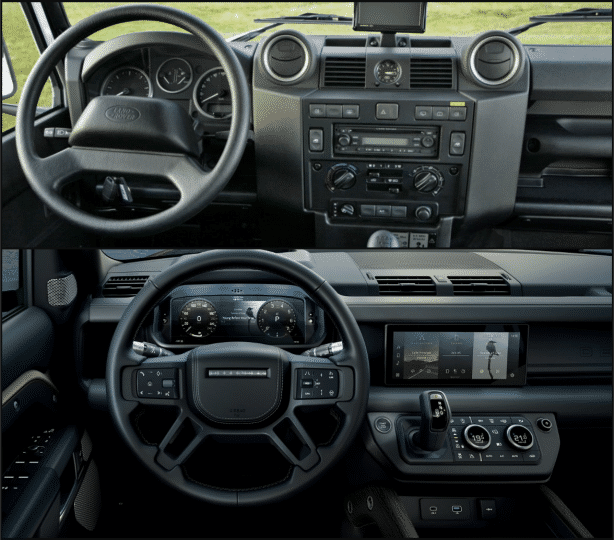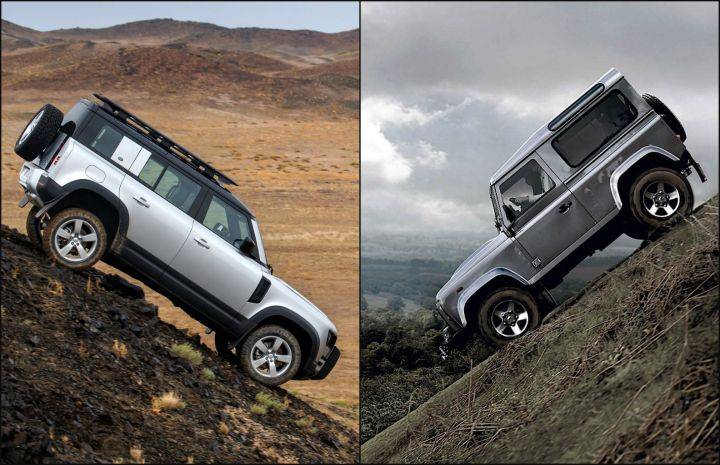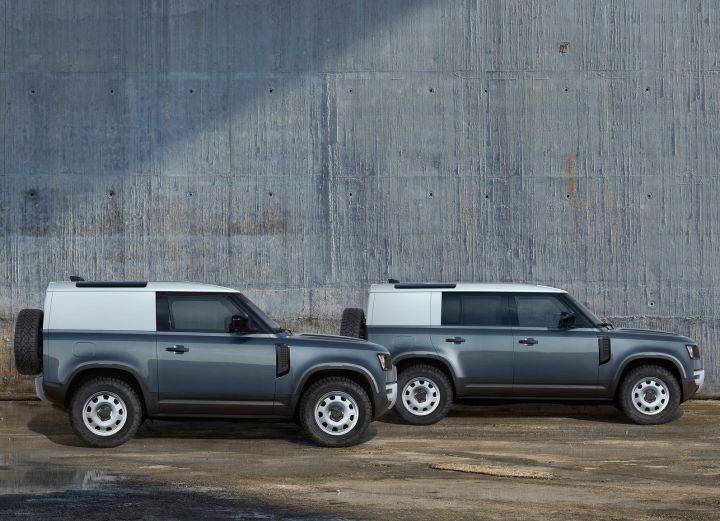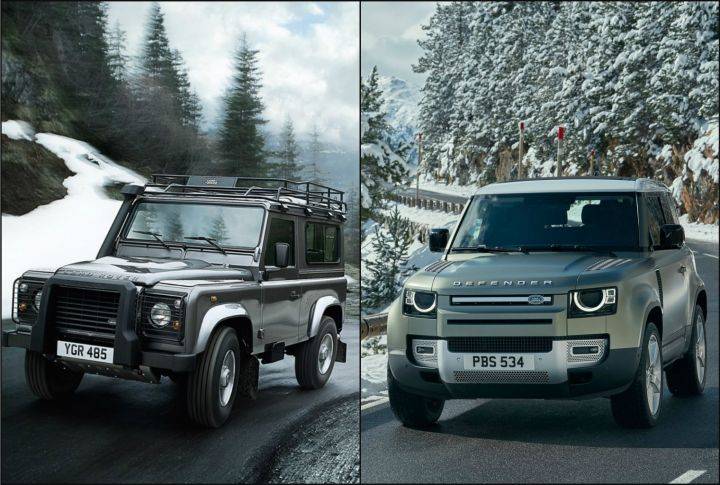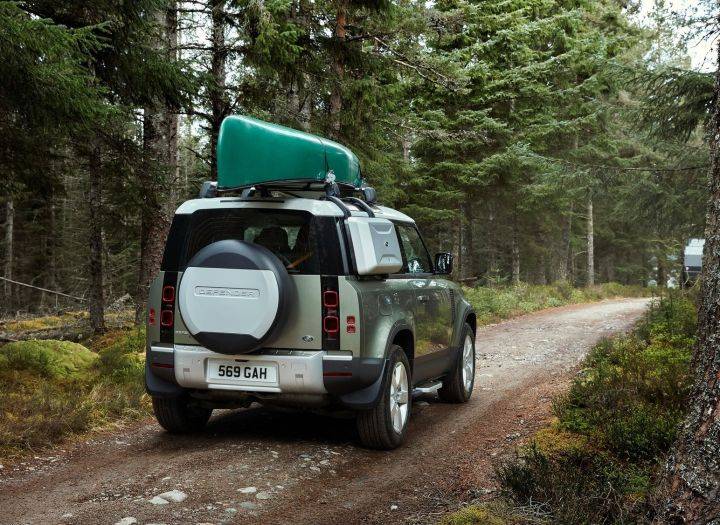- No One Should Buy a Classic Land Rover Defender. Here’s Why
- There were much better off-roaders available in America than the old Defender
- Old Defenders are irritating to drive on road
- The new Land Rover Defender is a much nicer car
- Old Land Rover Defenders were unsafe by contemporary and modern standards
- The Jeep Wrangler does everything the old Defender did for much cheaper
- Land Rover Defender: Old Vs New
- Land Rover Defender Video Review
No One Should Buy a Classic Land Rover Defender. Here’s Why
No matter why you want one, there’s probably a vehicle that better fits your needs.
Few vehicles summon up the sort of romance and nostalgia of the classic Land Rover Defender. The boxy, burly off-roader has stood for freedom and independence for decades, epitomizing the appeal of the outdoors even when trapped in the densest urban confines. Its rarity in the United States has pushed it even further into the realm of exclusivity; while most countries see them as farmland workhorses and stripped-down safari trucks, here in America, even high-mileage ones in mediocre condition often command price tags that could buy far newer, better-driving and more reliable vehicles.
Here’s the thing, though: The old Land Rover Defender sucks.
There were much better off-roaders available in America than the old Defender
Subjectively, sure, it’s super cool. Objectively? It stinks. By the standards of modern vehicles, it’s crude, slow and unsafe. Hell, even by the standards of the 1990s, it was mediocre. Those final years of Defenders available in America were on sale alongside the storied likes of the third-gen Toyota 4Runner and 80-Series Land Cruiser, the XJ-gen Jeep Cherokee and the Mitsubishi Montero — all of which delivered more refinement and power than the Defender. Stacked against modern Land Rovers, Toyotas, Jeeps or other off-roaders, it’s even worse.
Old Defenders are irritating to drive on road
For the record, I’m not speaking out of a certain orifice like Ace Ventura here. Back in 2019, I was lucky enough to drive one of South Carolina-based Himalaya’s Defender by Himalaya models, which represents perhaps the best possible version of an original Defender. Off-road, traversing the deep wood trails of upstate New York at low speeds, it was delightful. But once back into the real world of, y’know, roads — paved and dirt alike — it rapidly proved irritating.
The seating position, close enough to the controls , made every shift a long, deliberate process. The open flanks that seemed so inviting in the quiet woods stirred up the air to tinnitus-inducing levels. The slow steering that helped place the front end so carefully at 10 miles per hour felt painfully, almost unsafely cumbersome at the speed limit. Which, for the record, is about as fast as you’ll go on a highway, considering the brick-like aerodynamics and lack of power.
The new Land Rover Defender is a much nicer car
Indeed, for the vast majority of people — in particular, those who actually buy new SUVs with $50,000-plus price tags — the new Defender is a far better fit, as we discovered during our first test. It’s still super-capable off-road, as always, but the latest version combines that with heretofor-unknown-for-a-Defender levels of on-road handling and performance.
Okay, I grant you, it doesn’t look quite as good as a vintage model, but believe me, once you’re inside you won’t care.
Old Land Rover Defenders were unsafe by contemporary and modern standards
Also, speaking of that new version: while U.S. crash test results for the new Land Rover Defender haven’t been announced yet, it turned in excellent results in European crash testing. Still, it’d be literally impossible for it to be less safe than the old model, because that car was pulled from the U.S. marketplace in 1997 because it no longer met safety regulations.
Admittedly, that’s a compromise made with many old cars, but it’s still worth repeating, as is the following: in 1997, there were 268 million people in America and 42,013 auto-related deaths; 20 years later, there were 58 million more Americans, yet nearly 5,000 fewer people died on the road. It ain’t because we drove less, and it sure as hell ain’t because we turned into better drivers; it’s because the cars became safer.
The Jeep Wrangler does everything the old Defender did for much cheaper
The chief substantive draws of the old Defender, of course, are its incredible off-road capability, compact proportions and open-air flexibility. All of which are indeed appealing, and seem like fine reasons to snap up a second vehicle. Or at least they would be, were it not for a little vehicle called…the Jeep Wrangler.
America’s homegrown off-road icon does just about everything the Defender does, and it does it on the cheap. The least expensive Defenders of yore with a lot of miles on Cars.com still tend to start around $50,000. Wranglers of a similar vintage go for $10,000 to 15,000. And those Wranglers are all but guaranteed to be cheaper and easier to maintain than trying to wrangle parts for a three-decade-old British ride.
So, no: you shouldn’t buy a classic Land Rover Defender. If you want a boxy, open-top off-roader from decades past, go pick up a Wrangler. Or, if you want a compact Land Rover for city driving and off-roading, snag a lease on a Discovery Sport. Neither may pack quite as much curb appeal as a Defender, but you won’t care; you’ll be sitting inside, driving the damn thing. Which is what you should be doing with it.
(That said…I mean, I still want one.)
Land Rover Defender: Old Vs New
Land Rover has revived the iconic Defender after a brief hiatus of seven years. The new L663 Defender carries over the old legend’s charm while also being an all-rounder. The old Defender was renowned for its off-road credentials and understated looks, while the new one addresses that area with more flair. Here is a brief comparison to see what all has changed over the years:
The old Defender has a no-nonsense rudimentary design with an imposing stance and wide wheel arches. The 2020 Defender takes a different approach while also maintaining the quirks of the old one. It also gains modern LED headlights while sporting a more sophisticated design language.
Coming to the sides, we are happy to report that the latest iteration of the Defender has retained the Alpine window mounted up top. It also retains the boxy wheel arches and large windows. The air intake on the fenders have also been carried over, although they have now grown in size. But, you won’t find any exposed door hinges like in the old Defender anymore.
The old Defender got a barebone design at the rear with small round-shaped tail lamps. The new Defender, on the other hand, gets an eccentric design with square LED tail lamp units complete with a spare wheel. Look closely and you can see the similarity in the overall shape between the two brutes.
This is where the 2020 Defender sees some major upgrades; the cabin no longer looks basic as it now sports all the modern creature comforts complete one could think of, including a 10-inch infotainment system. The new Defender also gets a 12.3-inch digital instrument cluster and a four-spoke steering wheel with a plethora of controls. What’s common among the two SUVs, though, are the large size of the ergonomically-positioned controls.
The new Defender, similar to its predecessor, comes in 90 and 110 body styles. The three-door 90 body style and the five-door 110 body styles are similar to the old SUV but the 110 is now available with an optional 5+2 seating. Both body styles on the 2020 Defender are also available with an optional middle seat up front. The old Defender also came with the 127/130 bodystyle. Expect these to be offered in the new SUV in the near future.
The 2020 Defender is an all new SUV which shares nothing with its predecessor with respect to mechanicals. The powertrain options include a 2.0-litre inline-four diesel in two guises — D200 (200PS/430Nm) and D240 (240PS/430Nm). Meanwhile, the petrol engine is the P300 2.0-litre 4-cylinder unit that produces 300PS/400Nm. There’s also the P400 with a 3.0-litre 6-cylinder unit which is good enough for 400PS/550Nm. Land Rover has also hinted at a PHEV version that will follow in later.
The oldie used a slew of engine options which ranged from a 2.2-litre diesel to a 5.0-litre Jaguar-sourced V8 petrol (Defender Works). Also interesting is that during BMW’s ownership of Land Rover, the Defender used the M52 inline-six petrol that is also found under the hood of some BMW sedans. Other notable engines offered were a 3.9-litre Rover V8, two Ford’s Duratorq turbo-diesels, etc.
Comparing the features of both the SUVs would be futile as, let’s face the fact, the old Defender was too long in the tooth by the time it was discontinued and basically the same SUV from the time most of us were born. Nonetheless, Land Rover has got back into the game with the new Defender which looks promising, at least on paper. Out in the real world, the 2020 Defender will have to fight it out with its arch nemesis from the US — the Jeep Wrangler.
Land Rover Defender Video Review


